Exhibition
Resurrecting the Sublime
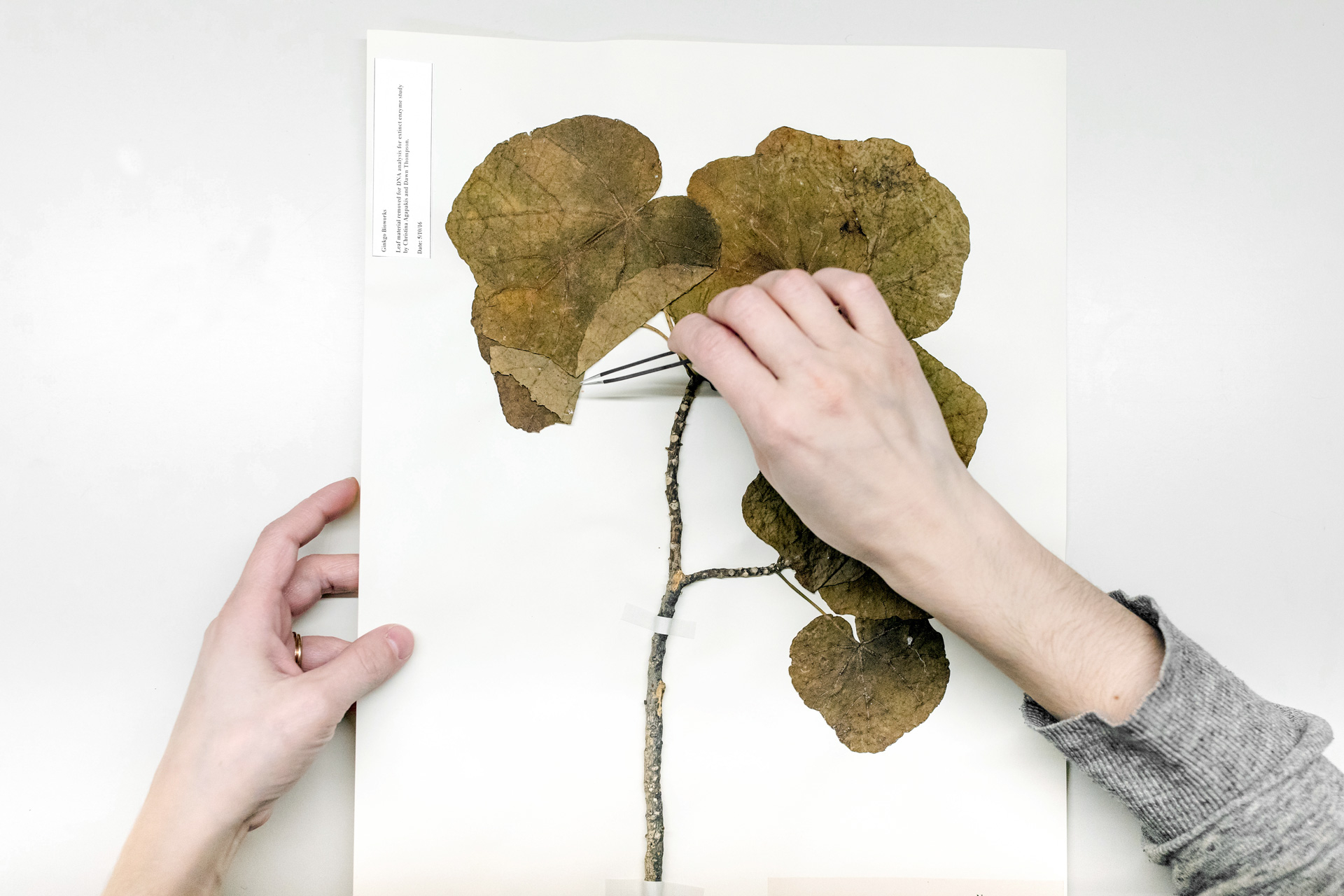 Alexandra Daisy Ginsberg, Resurrecting the Sublime, 2018-2019. Hibiscadelphus wilderianus, travail de Christina Agapakis. © Photographie : Grace Chuang/ Copyright : Grace Chuang, Gray Herbarium of Harvard University
Alexandra Daisy Ginsberg, Resurrecting the Sublime, 2018-2019. Hibiscadelphus wilderianus, travail de Christina Agapakis. © Photographie : Grace Chuang/ Copyright : Grace Chuang, Gray Herbarium of Harvard UniversityCould we ever again smell flowers driven to extinction by humans? Resurrecting the Sublime is an immersive exhibition which invites us to smell two extinct flowers, both lost due to colonial activity.
Commissioned by Lisa White, this is new large-scale installation is part of an ongoing collaboration between artist Dr. Alexandra Daisy Ginsberg, smell researcher and artist Sissel Tolaas, and an interdisciplinary team of researchers and engineers from the biotechnology company Ginkgo Bioworks led by Dr. Christina Agapakis, with the support of IFF Inc.
The installation allows us a glimpse of two flowers: one vitrine is filled with the smell of the Hibiscadelphus wilderianus Rock (Maui hau kuahiwi in Hawaiian), once indigenous to ancient lava fields on the southern slopes of Mount Haleakalā, Maui, Hawaii, before its forest habitat was decimated by colonial cattle ranching; the final tree was found dying in 1912. The other contains the Orbexilum stipulatum, or Falls-of-the-Ohio Scurfpea, last seen in 1881 on Rock Island in the Ohio River, Kentucky, before U.S. Dam No. 41 erased the island in the 1920s.
Using DNA extracted from flower specimens from Harvard University's Herbaria, the Ginkgo team used synthetic biology to predict and then resynthesize gene sequences that encode for fragrance-producing enzymes. Using Ginkgo's findings, Tolaas reconstructed the flowers' smells, using identical or comparative smell molecules. We know which smell molecules the flowers may have produced, but the amounts are also lost. In Ginsberg's installation design, fragments of each flower's smell mix: there is no "exact" smell. The lost landscape is reduced to its geology and the flower's smell: the human connects the two and becomes the specimen on view.
Resurrecting the smell of extinct flowers so that humans may again experience something we destroyed is awesome and perhaps terrifying; it evokes the "sublime". But this is not de-extinction. Instead, biotechnology, smell, and digitally reconstructed landscapes reveal the complex interplay of species and places that no longer exist. Resurrecting the Sublime asks us to contemplate our actions, and potentially change them for the future.
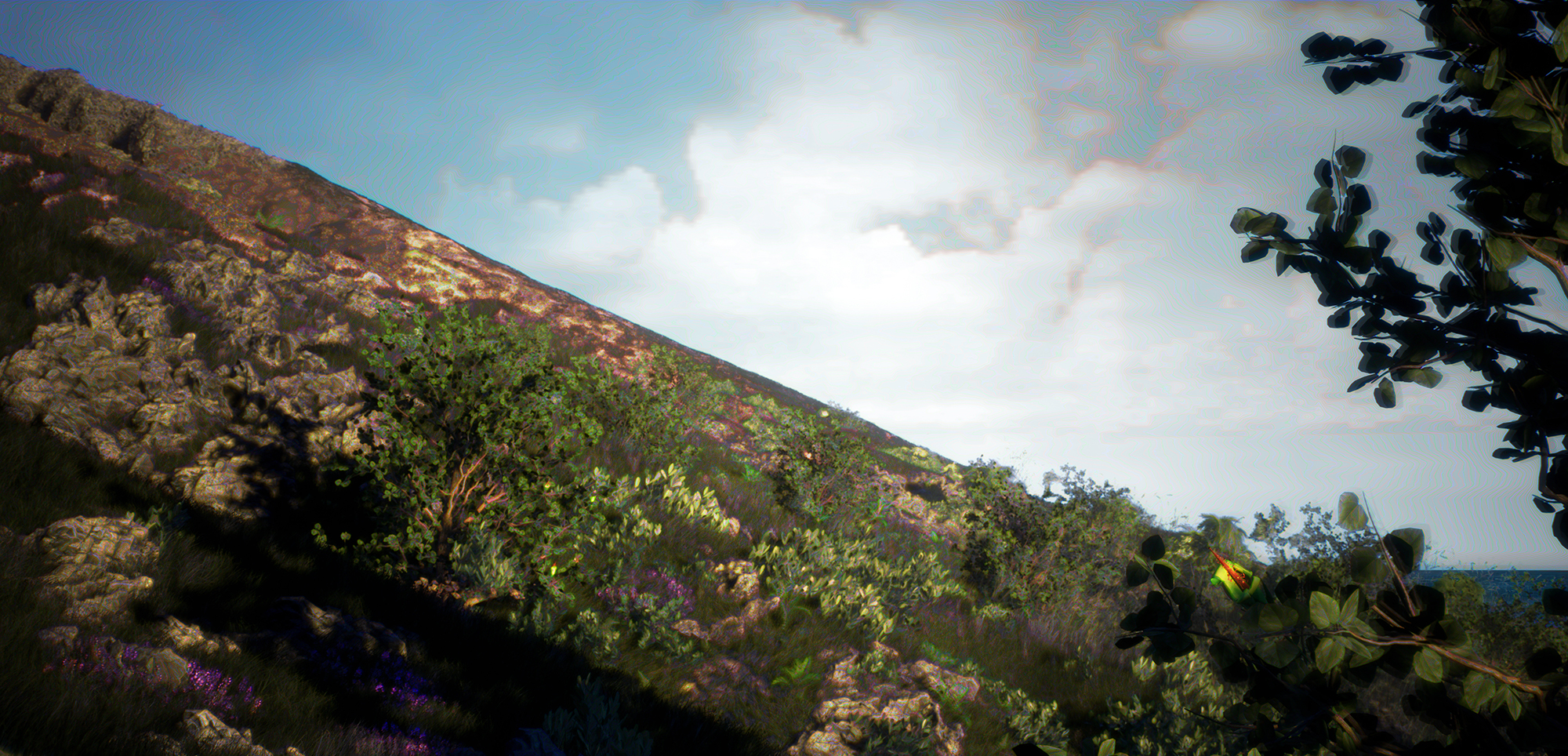 Resurrecting the Sublime: digital reconstruction of the now extinct Hibiscadelphus wilderianus Rock, on the southern slopes of Mount Haleakala, Maui, Hawaii, around 1912.
Resurrecting the Sublime: digital reconstruction of the now extinct Hibiscadelphus wilderianus Rock, on the southern slopes of Mount Haleakala, Maui, Hawaii, around 1912. ©Alexandra Daisy Ginsberg
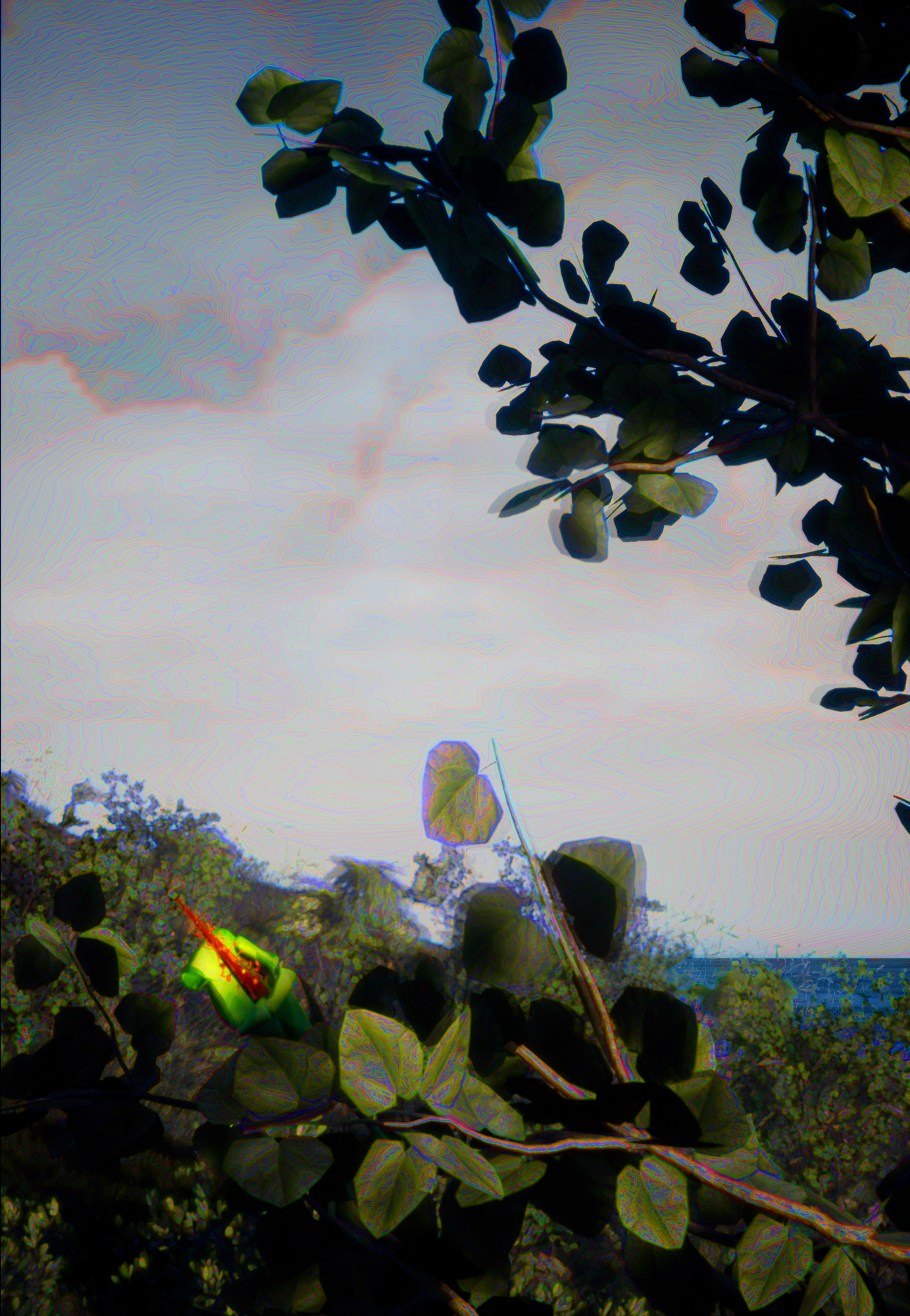 Resurrecting the Sublime: digital reconstruction of the extinct Hibiscadelphus wilderianus Rock on the southern slopes of Mount Haleakala, Maui, Hawaii, around 1912.©Alexandra Daisy Ginsberg
Resurrecting the Sublime: digital reconstruction of the extinct Hibiscadelphus wilderianus Rock on the southern slopes of Mount Haleakala, Maui, Hawaii, around 1912.©Alexandra Daisy Ginsberg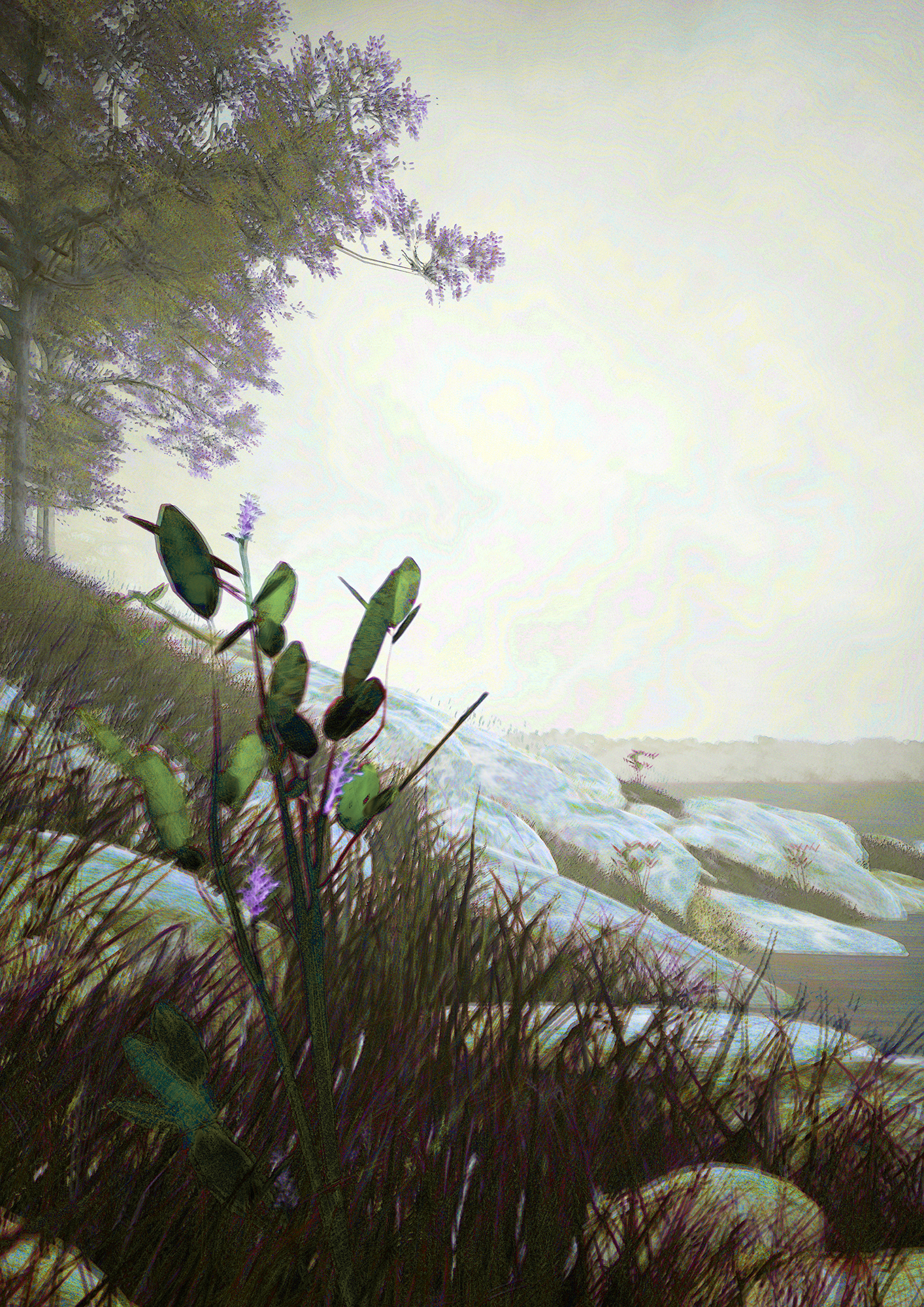 Resurrecting the Sublime: digital reconstruction of the extinct Orbexilum stipulatum in its lost habitat of Rock Island on the Ohio River, Kentucky, before its extinction in 1881.©Alexandra Daisy Ginsberg
Resurrecting the Sublime: digital reconstruction of the extinct Orbexilum stipulatum in its lost habitat of Rock Island on the Ohio River, Kentucky, before its extinction in 1881.©Alexandra Daisy Ginsberg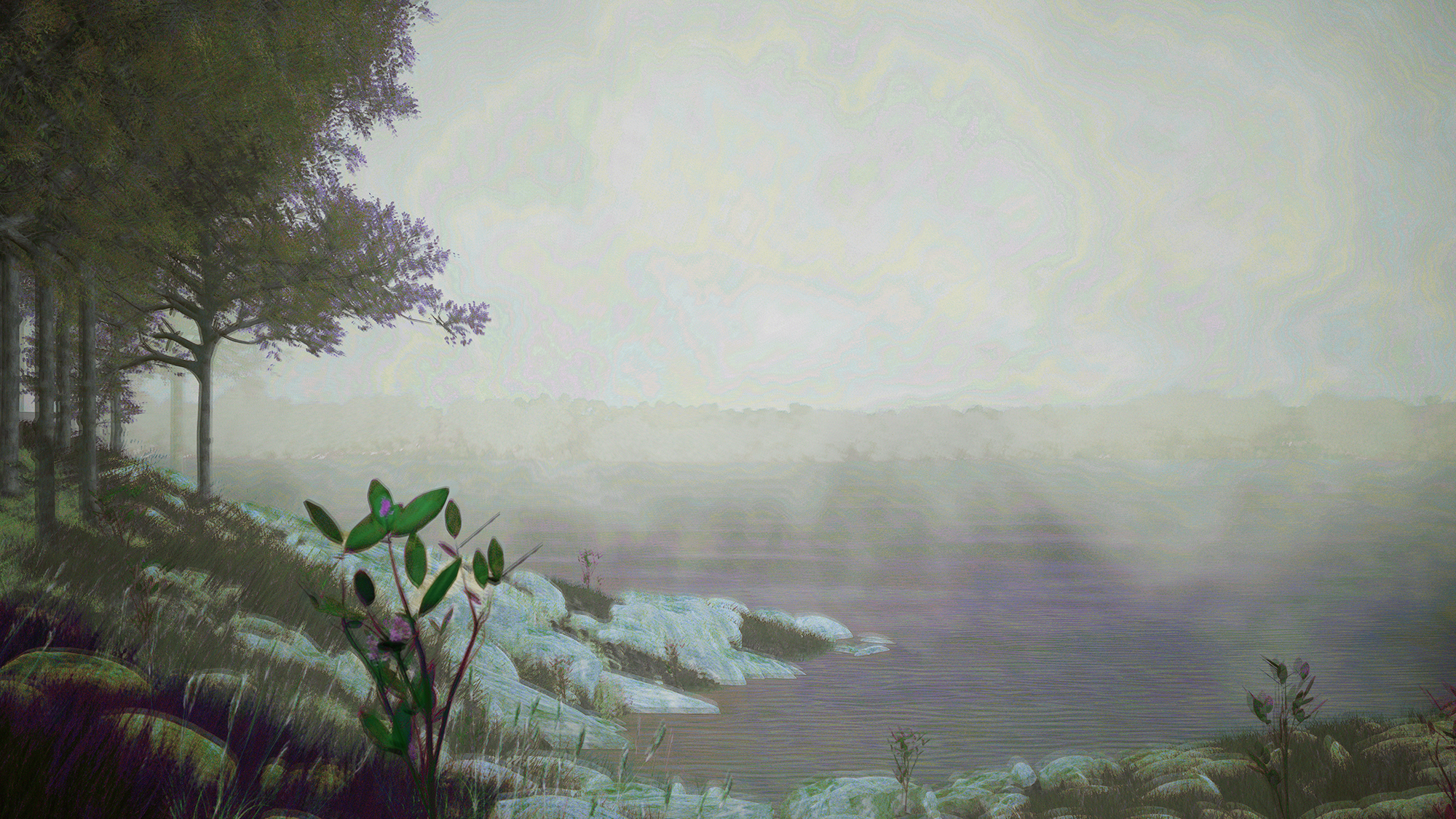 Resurrecting the Sublime: digital reconstruction of the extinct Orbexilum stipulatum in its lost habitat of Rock Island on the Ohio River, Kentucky, before its extinction in 1881.©Alexandra Daisy Ginsberg
Resurrecting the Sublime: digital reconstruction of the extinct Orbexilum stipulatum in its lost habitat of Rock Island on the Ohio River, Kentucky, before its extinction in 1881.©Alexandra Daisy GinsbergBiography
Dr Alexandra Daisy Ginsberg is a British artist working across disciplines and media to explore the human values that shape design, science, technology, and nature. Through installations, writing and curatorial projects, Daisy examines why we make things, what those things are, and their relationship with us and the world. Daisy has spent over ten years researching synthetic biology and the design of living matter, pushing the boundaries of design and science with scientists, engineers, artists, designers, historians, social scientists, and museums around the world.
Curator
Alexandra Daisy Ginsberg
Scenography
Alexandra Daisy Ginsberg
Site
Cité du design – Manufacture3 rue Javelin Pagnon
42000 Saint-Étienne
Date
BackFrom Mar 21 to Apr 22










